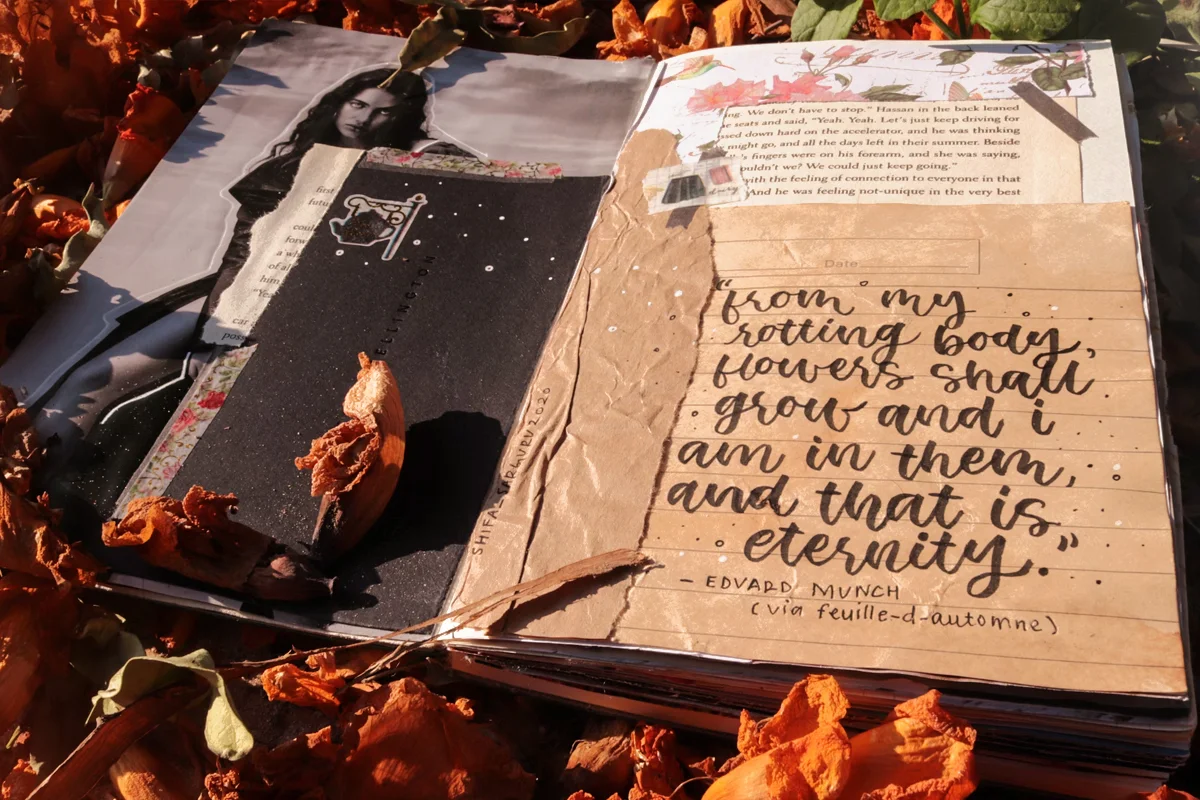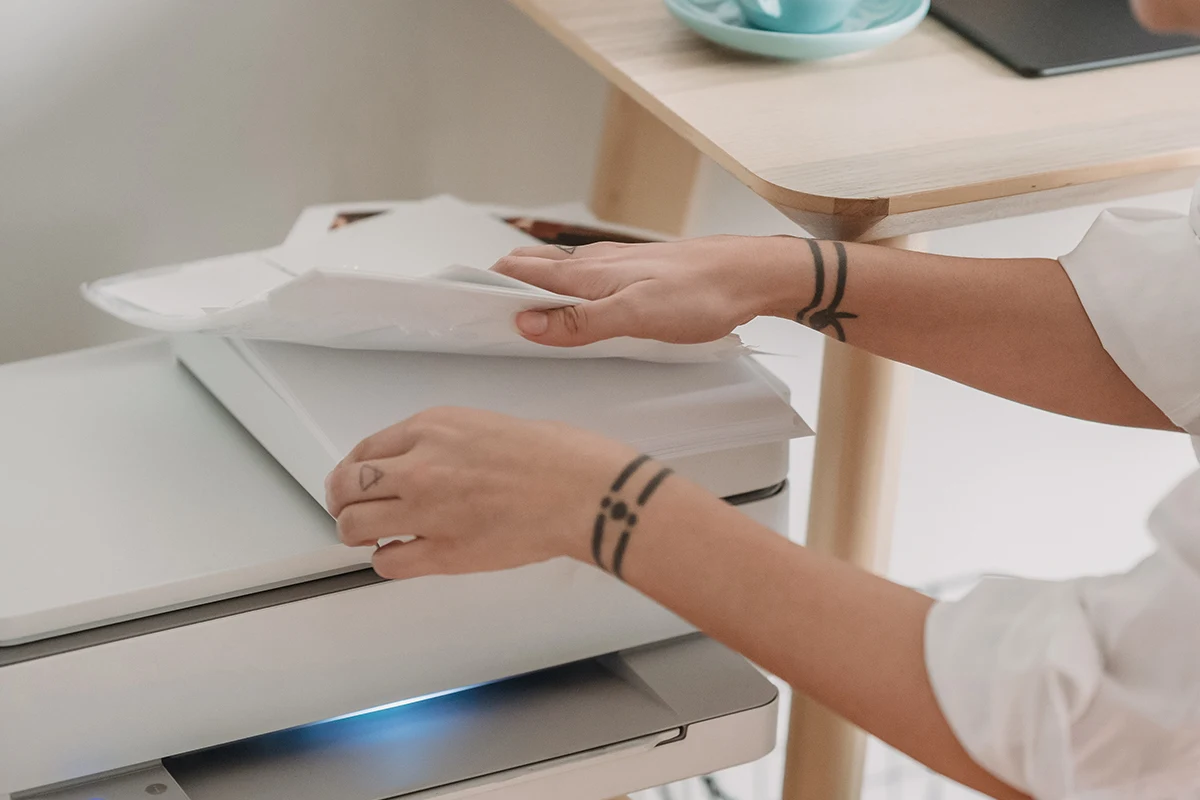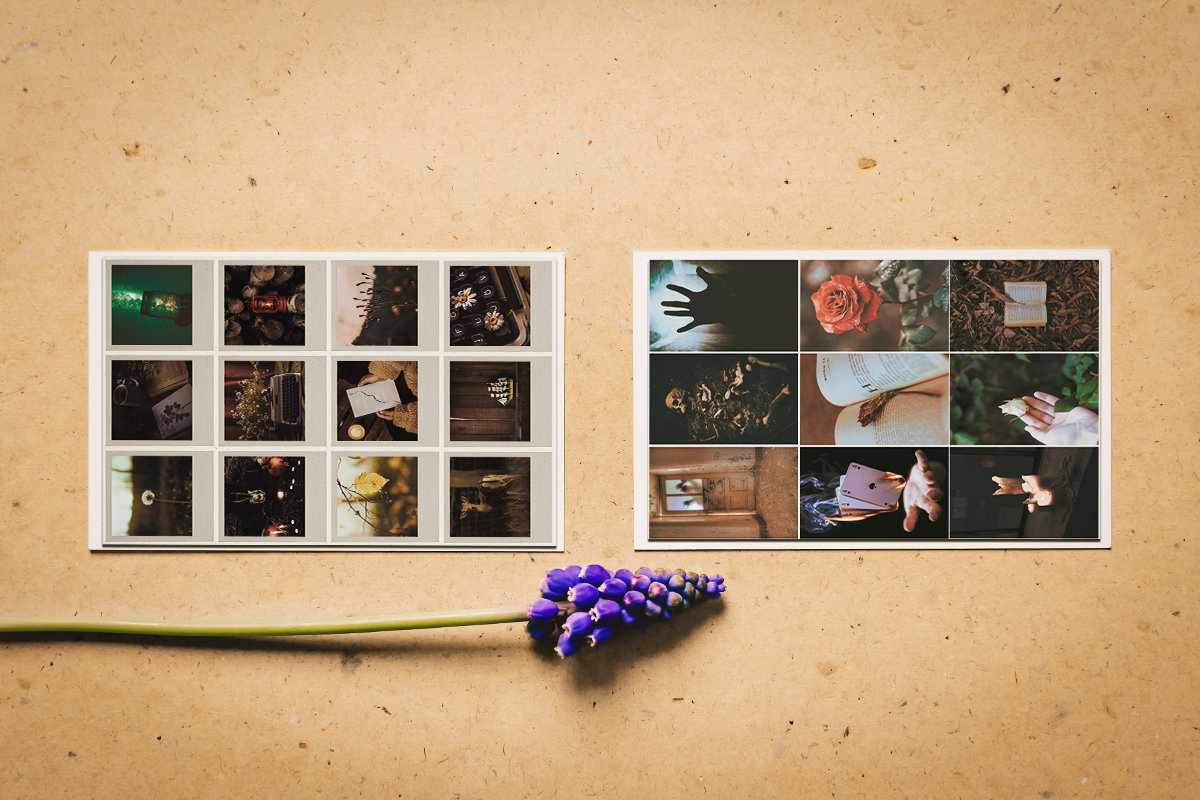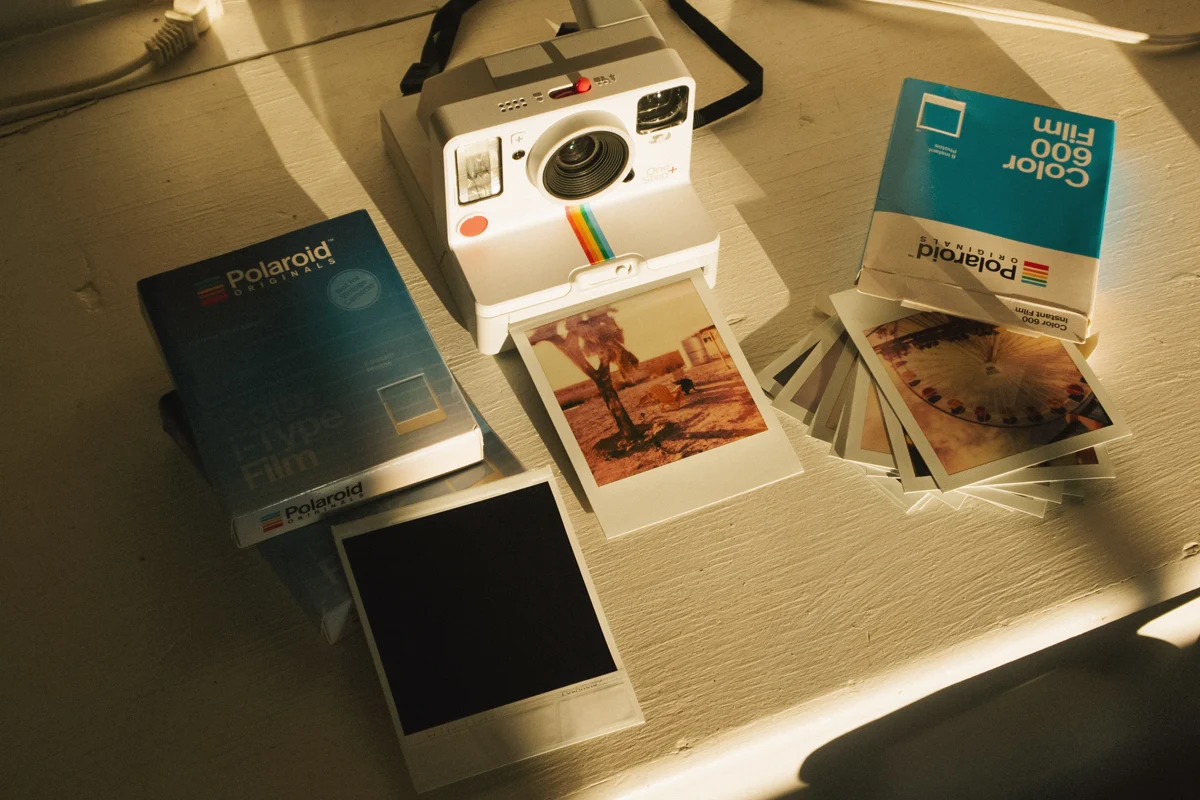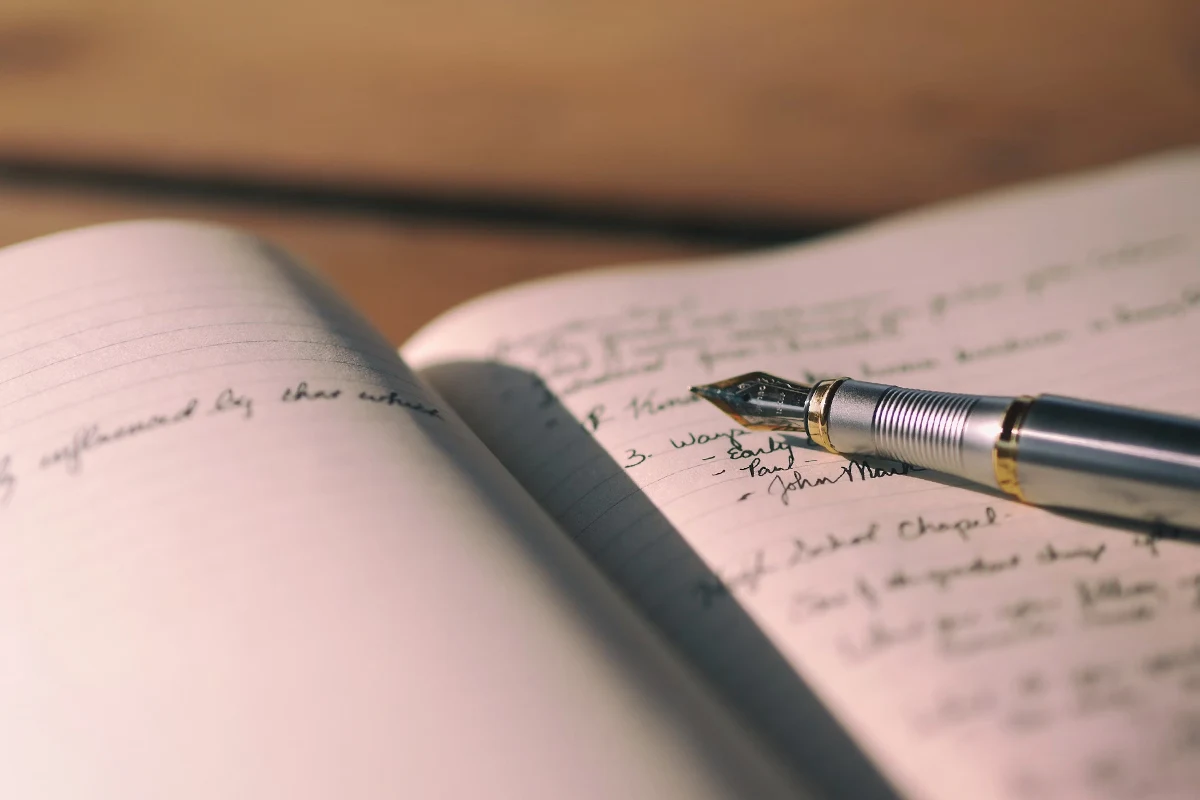Crafting a recycled junk journal from discarded materials is not only an eco-conscious endeavor but also a delightful exercise in creativity. The term "junk journal" might sound contradictory, but it's about repurposing everyday items and transforming them into beautiful and functional pieces of art. Today we'll try to learn a bit more about the fascinating world of junk journaling, from sourcing materials to crafting your very own recycled masterpiece.
What Junk Materials Can I Use for a Junk Journal?
The beauty of junk journaling lies in its versatility when it comes to materials. Almost anything you consider "junk" can be repurposed into a charming journal. Here are some unique items to consider:
- Vintage Papers:
Old newspapers, magazine clippings, and yellowed book pages provide a nostalgic charm to your journal's pages. You can pick both clean and filled pages. I usually reserve filled sides for collages or draw patterns over them.
- Packaging Materials:
Envelopes, cardboard packaging, and bubble wrap can be creatively transformed into pockets, flaps, and textured pages. My favorites are tea boxes for small journals and takeout cardboard boxes for larger formats. Junk pick a clean cardboard without any greasy or dirt on it.
- Fabric Scraps:
Pieces of fabric, lace, or ribbon can be sewn onto your journal cover or used as embellishments within the pages. Alternatively, you can assemble a unique fabric pattern and make a cover for your journal.
- Scrapbooking Scraps:
Why throw unique journaling materials away, when you can remove these scraps again! Leftover bits and pieces from your scrapbooking projects can add a touch of color, texture, and shape to your journal project.
- Maps and Brochures:
Repurpose old maps, travel brochures, and tourist pamphlets to evoke memories of your adventures.
- Buttons, Beads, and Trinkets:
Small objects like buttons, beads, and trinkets can be attached to journal pages for a tactile experience.
- Greeting Cards:
Old greeting cards or postcards can become charming additions, especially when they hold sentimental value.
- Wrapping Paper:
Wrapping paper makes a great cover for the inner pages. You can also reuse pretty wrapping paper pieces for decorative elements.
- Art Supplies:
Dried paint palettes, used brushes, and even empty paint tubes can be incorporated for an artistic touch to your recycled junk journal.
How to Upcycle Pages from Old Journals and Books
If you have unused or partially filled journals lying around, consider carefully removing pages that you want to reuse. I have a bunch of them and feel like throwing them into the trash would be such a waste! So, if you have some old journals with clear pages (or aesthetically filled you want to reuse) you should accurately remove them and sew them into your new recycled journal. A variety of colors, textures, and designs will only add personality to the junk journal.
The same goes for vintage books often have beautifully aged pages that are perfect for junk journaling. Carefully disassemble old books or find damaged ones at thrift stores. You can also photocopy pages from books if you don't want to alter the originals or print vintage letters and add them to your project. Use these materials for both their visual and textural qualities.
- Age pages for an extra touch of vintage vibe:
If you have plain, new pages you'd like to give an aged look, consider tea staining or distressing techniques. Dabbing a tea bag or diluting acrylic paint with water and lightly brushing it over the paper can create the desired effect.
- What to add to a recycled junk journal?
Once you've gathered your materials and upcycled your pages, it's time to assemble your recycled junk journal. Here are some elements you can add to make it truly unique:
Embellishments: Use buttons, beads, sequins, or small trinkets to add texture and visual interest to your pages.
Pockets and Envelopes: Create pockets from repurposed envelopes or fabric to tuck in mementos, notes, or small keepsakes.
Artistic Touches: Add your own drawings, paintings, or mixed media artwork to personalize your journal.
Vintage Photos: Incorporate old family photos or vintage images to infuse your journal with nostalgia.
Quotes and Poetry: Include your favorite quotes, verses, or poetry that resonate with your journal's theme.
Stamps and Stencils: Use stamps and stencils to create patterns, designs, or motifs that enhance the overall aesthetic.
Handwriting and Journaling: Your thoughts, memories, and reflections are the heart and soul of your journal. Write, doodle, and express yourself freely on its pages.
Ribbons and Bookmarking: Attach ribbons or fabric strips as bookmarks to easily find your favorite sections.
Wrapping Up...
Creating a recycled junk journal is not only a sustainable practice but also a therapeutic and artistic endeavor. It allows you to breathe new life into discarded materials while unleashing your creativity. Whether you're a seasoned journaling enthusiast or a beginner, the process of crafting a beautiful recycled journal from actual junk is a rewarding journey that lets you celebrate both your creativity and your commitment to sustainability. So, start collecting those bits of "junk," gather your materials, and embark on the adventure of making your very own recycled junk journal.
How to Make a Beautiful Recycled Junk Journal From the Actual Junk?
How to Make a Beautiful Recycled Junk Journal From the Actual Junk?
Crafting a recycled junk journal from discarded materials is not only an eco-conscious endeavor but also a delightful exercise in creativity. The term "junk journal" might sound contradictory, but it's about repurposing everyday items and transforming them into beautiful and functional pieces of art. Today we'll try to learn a bit more about the fascinating world of junk journaling, from sourcing materials to crafting your very own recycled masterpiece.
What Junk Materials Can I Use for a Junk Journal?
The beauty of junk journaling lies in its versatility when it comes to materials. Almost anything you consider "junk" can be repurposed into a charming journal. Here are some unique items to consider:
- Vintage Papers:
Old newspapers, magazine clippings, and yellowed book pages provide a nostalgic charm to your journal's pages. You can pick both clean and filled pages. I usually reserve filled sides for collages or draw patterns over them.
- Packaging Materials:
Envelopes, cardboard packaging, and bubble wrap can be creatively transformed into pockets, flaps, and textured pages. My favorites are tea boxes for small journals and takeout cardboard boxes for larger formats. Junk pick a clean cardboard without any greasy or dirt on it.
- Fabric Scraps:
Pieces of fabric, lace, or ribbon can be sewn onto your journal cover or used as embellishments within the pages. Alternatively, you can assemble a unique fabric pattern and make a cover for your journal.
- Scrapbooking Scraps:
Why throw unique journaling materials away, when you can remove these scraps again! Leftover bits and pieces from your scrapbooking projects can add a touch of color, texture, and shape to your journal project.
- Maps and Brochures:
Repurpose old maps, travel brochures, and tourist pamphlets to evoke memories of your adventures.
- Buttons, Beads, and Trinkets:
Small objects like buttons, beads, and trinkets can be attached to journal pages for a tactile experience.
- Greeting Cards:
Old greeting cards or postcards can become charming additions, especially when they hold sentimental value.
- Wrapping Paper:
Wrapping paper makes a great cover for the inner pages. You can also reuse pretty wrapping paper pieces for decorative elements.
- Art Supplies:
Dried paint palettes, used brushes, and even empty paint tubes can be incorporated for an artistic touch to your recycled junk journal.
How to Upcycle Pages from Old Journals and Books
If you have unused or partially filled journals lying around, consider carefully removing pages that you want to reuse. I have a bunch of them and feel like throwing them into the trash would be such a waste! So, if you have some old journals with clear pages (or aesthetically filled you want to reuse) you should accurately remove them and sew them into your new recycled journal. A variety of colors, textures, and designs will only add personality to the junk journal.
The same goes for vintage books often have beautifully aged pages that are perfect for junk journaling. Carefully disassemble old books or find damaged ones at thrift stores. You can also photocopy pages from books if you don't want to alter the originals or print vintage letters and add them to your project. Use these materials for both their visual and textural qualities.
- Age pages for an extra touch of vintage vibe:
If you have plain, new pages you'd like to give an aged look, consider tea staining or distressing techniques. Dabbing a tea bag or diluting acrylic paint with water and lightly brushing it over the paper can create the desired effect.
- What to add to a recycled junk journal?
Once you've gathered your materials and upcycled your pages, it's time to assemble your recycled junk journal. Here are some elements you can add to make it truly unique:
Embellishments: Use buttons, beads, sequins, or small trinkets to add texture and visual interest to your pages.
Pockets and Envelopes: Create pockets from repurposed envelopes or fabric to tuck in mementos, notes, or small keepsakes.
Artistic Touches: Add your own drawings, paintings, or mixed media artwork to personalize your journal.
Vintage Photos: Incorporate old family photos or vintage images to infuse your journal with nostalgia.
Quotes and Poetry: Include your favorite quotes, verses, or poetry that resonate with your journal's theme.
Stamps and Stencils: Use stamps and stencils to create patterns, designs, or motifs that enhance the overall aesthetic.
Handwriting and Journaling: Your thoughts, memories, and reflections are the heart and soul of your journal. Write, doodle, and express yourself freely on its pages.
Ribbons and Bookmarking: Attach ribbons or fabric strips as bookmarks to easily find your favorite sections.
Wrapping Up...
Creating a recycled junk journal is not only a sustainable practice but also a therapeutic and artistic endeavor. It allows you to breathe new life into discarded materials while unleashing your creativity. Whether you're a seasoned journaling enthusiast or a beginner, the process of crafting a beautiful recycled journal from actual junk is a rewarding journey that lets you celebrate both your creativity and your commitment to sustainability. So, start collecting those bits of "junk," gather your materials, and embark on the adventure of making your very own recycled junk journal.

